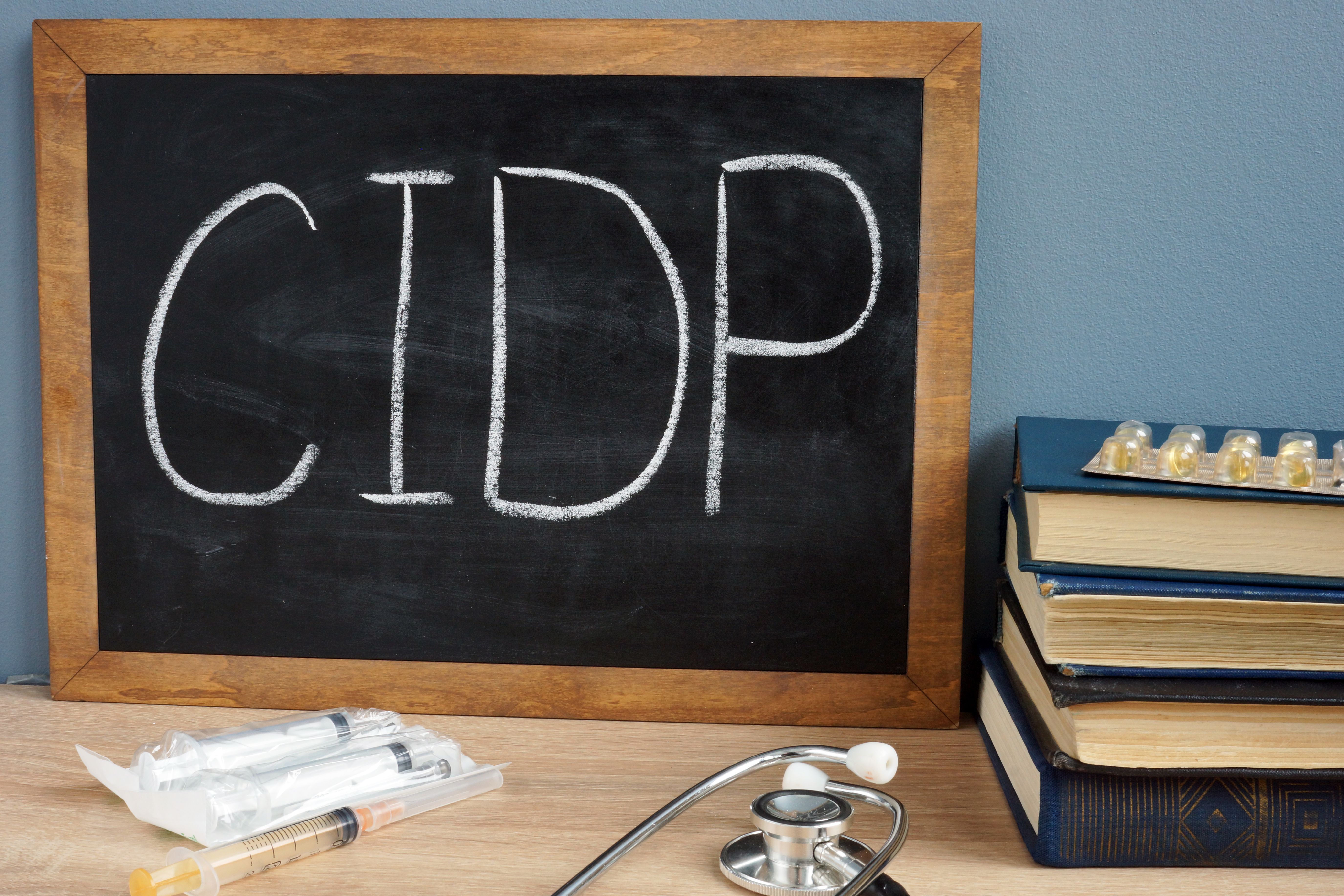- Center on Health Equity & Access
- Clinical
- Health Care Cost
- Health Care Delivery
- Insurance
- Policy
- Technology
- Value-Based Care
Widespread, Multifaceted Burden of CIDP Highlighted at MDA 2025
Chronic inflammatory demyelinating polyneuropathy (CIDP) can have a substantial impact on patients everyday life and, consequently, put added stress on health care systems.
Chronic inflammatory demyelinating polyneuropathy (CIDP) imposes a considerable burden on health care systems, caregivers, and patients alike. From rising financial costs to disruptions in employment and daily life, the aftermath of a CIDP diagnosis can contribute to a myriad of challenges. Two posters presented at the 2025 Muscular Dystrophy Association Clinical & Scientific Conference highlighted the widespread impact of CIDP and the need for improved management strategies and support networks.
Chronic inflammatory demyelinating polyneuropathy not only affects day-to-day activities but can have a drastic financial impact. | image credit: Vitalii Vodolazskyi - stock.adobe.com

A Toll on Caregivers, Employment, and Day-to-Day Activities
CIDP can lead to patients feeling weak, among an array of other sensory symptoms. As such, this rare neuromuscular condition can greatly impact one’s daily functioning. To evaluate CIDP burden further, the Adelphi CIDP Disease Specific Programme, a cross-sectional, real-world survey, gathered data from US patients and their neurologist. Beginning in September 2022 and ending in April 2023, measures related to individuals’ employment status, use of mobility aids or a caregiver, the Inflammatory Rasch-built Overall Disability Scale (I-RODS), and more were used and matched alongside electronic records.1
The patients (n = 76) included were aged 57 to 58 years on average, 64% were male, and 82% were receiving immunoglobulins or corticosteroids (65% vs 39%) as primary treatment. Leaning into these interventions, patients’ main goals were to improve their quality of life (25%), their coordination and balance (23%), and recover function or control of their arms or legs (18%). Eighteen participants needed help from a caregiver for an average of 5 hours per day. Most caregivers were patients’ spouses or partners (80%).
The data showed that 59% (n = 44) were in need of mobility aids like walking sticks or canes, and 42% still lived with moderate-severe symptoms despite their treatment. I-RODS scores revealed that many patients felt particular daily activities were “difficult or even impossible” to do, including standing for prolonged periods (63%), walking a single flight of stairs (61%), and bending to pick things up (58%).
The analysis further demonstrated that 22% of these patients were unemployed, while 20% were retired and not working, 13% were away on long-term sick leave, and 3% worked part time. In 41% of these scenarios, patients attributed their employment status to CIDP. As this disease has shown to have a great impact on individuals’ daily lives and ability to work, the authors stressed how these data indicate that caregivers may need more help themselves.
Clinical and Economic Burden
A retrospective cohort study further investigated the degree of clinical burden and financial costs related to CIDP. Between January 2016 and December 2023, data from the Optum Market Clarity system were gathered for patients with at least 2 claims related to CIDP (separated by 30-365 days), at least 1 nerve conduction test (90 days or more after their initial claim [index], followed by at least 1 CIDP-related claim in the next 365 days), and a persistent enrollment in the year prior to their index data, as well as 2 years after the index date.2
Patients with CIDP were matched with controls without CIDP at a ratio of 1:3 according to propensity scores.
In total, 1435 patients with CIDP and 4305 controls were included. Data revealed that the all-cause health care resource utilization (HCRU) for those with CIDP was more than 3 times the HCRU for controls ($170,275 vs $49,486; P < .001), with drug administrations and prescription costs being a primary driver ($93,126 vs $11,529; P < .001). The authors noted that patients with CIDP had greater HCRU no matter the care setting.
Compared with the control group, the CIDP group more commonly used antidepressants (48% vs 30%), opioids (53% vs 38%), immunoglobulins (54% vs 0%), anticonvulsant drugs (48% vs 30%), and steroids (62% vs 43%) (P < .0001). Furthermore, at follow-up, comorbidities were more prevalent in the CIDP group vs controls, including neuropathic pain (100% vs 41%), back pain (71% vs 45%), cerebrovascular disease (29% vs 18%), sleep disorders (46% vs 33%), among others. These figures, the authors concluded, demonstrate the clear, substantial burden CIDP places on health care systems, as well as the patients seeking to manage their condition.
References
1. Nowacek D, Karkare S, Arvin-Berod C, et al. Employment, daily activities and caregiver burden in CIDP: results of a real-world US survey. Presented at: MDA Clinical & Scientific Conference; March 16-19, 2025; Dallas, Texas. Poster P381.
2. Blein C, Karkare S, Mahajerin A, et al. Incremental economic and clinical burden of illness among adults with chronic inflammatory demyelinating polyneuropathy in the United States. Presented at: MDA Clinical & Scientific Conference; March 16-19, 2025; Dallas, Texas. Poster P380.
